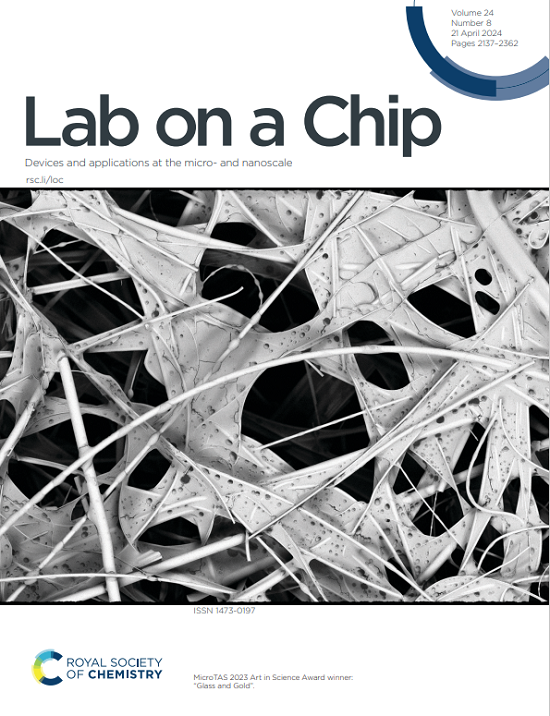Integrated microfluidic colorimetric patch with auto-framing APP for multiplex temporal detection of ketone bodies in sweat.
IF 6.1
2区 工程技术
Q1 BIOCHEMICAL RESEARCH METHODS
引用次数: 0
Abstract
Ketone bodies are key products of fat metabolism, primarily consisting of acetoacetate (AcAc), β-hydroxybutyrate (BHB), and acetone (acetone). Monitoring the concentration of ketone bodies in sweat can reflect the metabolic status of the body; it is also particularly significant in areas such as diabetes management, exercise monitoring, and the evaluation of the ketogenic diet. This paper presents a microfluidic patch for sweat collection and multiplex detection of AcAc, BHB and glucose. The microfluidic patch can achieve time-sequential sensing through Tesla valves, hydrophilic coatings, and unique chamber structural design. The concentrations of the three substances are quantified using colorimetric methods. Additionally, this study has designed a colorimetric app which can achieve automatic framing and detect the grayscale value of the colored area. Experimental results show that the patch can accurately detect changes in the concentrations of the three substances within specific ranges. The linear detection range for AcAc is 0.25 mM to 8 mM, the limit of detection (LOD) is 0.08 mM; for BHB, the linear detection range is 0.05 mM to 0.80 mM, the LOD is 0.02 mM; and for glucose, the linear detection range is 62.50 μM to 1000 μM, the LOD is 20.83 μM. In the future, this technology is expected to be applied to portable metabolic monitoring devices, offering a convenient solution for personal health management.集成微流控比色贴片与自动分幅APP用于汗液中酮体的多重时间检测。
酮体是脂肪代谢的关键产物,主要由乙酰乙酸酯(AcAc)、β-羟基丁酸酯(BHB)和丙酮(acetone)组成。监测汗液中酮体的浓度可以反映机体的代谢状态;它在糖尿病管理、运动监测和生酮饮食评估等领域也特别重要。本文提出了一种微流控贴片,用于汗液采集和AcAc、BHB和葡萄糖的多重检测。微流控贴片通过特斯拉阀、亲水性涂层和独特的腔室结构设计实现时间序列传感。这三种物质的浓度用比色法定量测定。此外,本研究还设计了一款可以实现自动分幅和检测彩色区域灰度值的比色应用程序。实验结果表明,该贴片能准确检测出三种物质在特定范围内的浓度变化。AcAc的线性检测范围为0.25 mM ~ 8mm,检出限(LOD)为0.08 mM;对于BHB,线性检测范围为0.05 mM ~ 0.80 mM,检出限为0.02 mM;葡萄糖的线性检测范围为62.50 μM ~ 1000 μM, LOD为20.83 μM。未来,该技术有望应用于便携式代谢监测设备,为个人健康管理提供便捷的解决方案。
本文章由计算机程序翻译,如有差异,请以英文原文为准。
求助全文
约1分钟内获得全文
求助全文
来源期刊

Lab on a Chip
工程技术-化学综合
CiteScore
11.10
自引率
8.20%
发文量
434
审稿时长
2.6 months
期刊介绍:
Lab on a Chip is the premiere journal that publishes cutting-edge research in the field of miniaturization. By their very nature, microfluidic/nanofluidic/miniaturized systems are at the intersection of disciplines, spanning fundamental research to high-end application, which is reflected by the broad readership of the journal. Lab on a Chip publishes two types of papers on original research: full-length research papers and communications. Papers should demonstrate innovations, which can come from technical advancements or applications addressing pressing needs in globally important areas. The journal also publishes Comments, Reviews, and Perspectives.
 求助内容:
求助内容: 应助结果提醒方式:
应助结果提醒方式:


